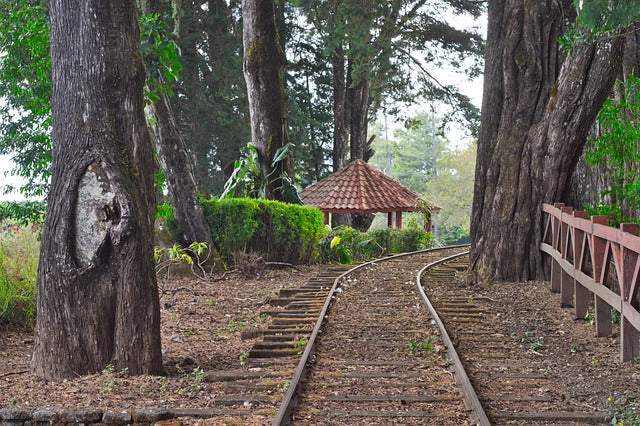
That's One Way to Learn the Language...
Share
Soon after the Mariel Boatlift from Cuba to the US began in 1980, the United Methodist Church sent my mother and about 20 others to Costa Rica. Presumably it was to be immersed in culture and learn Spanish, although in recollection, Mom said “Why they couldn’t actually immerse us in the culture with which we’d be working is beyond me.”
The church’s plans (and related grant) were to open day care centers for Cuban and Haitian refugees in what was then simply called Krome Camp. (This was when Krome was still considered not to be a place of torture or housing for ‘bad guys’.) Being an employee in the South Florida district, she volunteered to be part of the team which would accomplish this goal. Her job specifically was to teach U.S acclimation skills in the realm of culture and parenting to Cuban and Haitian refugee women and children. I remember her job title being excessively long. A few days per week she would work onsite, while she was in the office doing the admin side of the work for the remainder.
A brief run-down of Costa Rica and Nicaragua during the 70’s:
By 1980 Ortega was the new Nicaraguan president after the Sandinistas (FSLN) had taken the government and National Guard from Samoza in 1979, who by all accounts was a fascist. (The guy had had dissidents killed, declared martial law, ordered Costa Rican border towns attacked by plane, and controlled the media and press. He fled to Miami after losing.) Costa Rica’s president Carazo had been elected after the death of long-time-rebel-leader Figueres in 1978. Figueres had provided arms to the FSLN during the civil war against Samoza. Later it was revealed that not only did Carazo know about the arms deals, he was totally cool with continuing them.
This was all a few years before we knew that Ortega was also somewhat of a human rights violator, but not quite one on par with the CIA, who in the early-to-mid-1980’s used Costa Rica as one of their bases for arming and training Contras in the region. That’s a whole ‘nother story which gratefully has no effect on my mother, unless yelling at Reagan and Ollie North on the news counts as “effect”.
But my mom, the tiny blonde Alabamian who just wanted to do some justice work, agreed to go. Her boss assured her that everything was cool, and perhaps it was, before she got there. Thanks to some residual fighting after Ortega’s election, the borders to both Nicaragua and Panama were closed within 12 hours of her group’s arrival in the central Costa Rican mountains. At least they got a nice late dinner...
Mom was not pleased, but it’s not as if she could go back home. She was stuck there in the mountains where rain fell straight down every afternoon, causing steam to rise through the hills. Every now and then she would trek with the group into town for sodas with paper straws, and the male American ministers would disrupt every ounce of quiet the place had with their attitude. Sometimes they’d go look at waterfalls, but usually they were in Spanish class six hours per day, learning little-to-nothing about what had transpired regionally in the previous years and months.
Looking back on it, Mom said “I can’t believe they didn’t teach us jack shit, not that that would have prepared us for Krome any way.” I guess they prettied it up, though.
A few nights into their 10-day-plus stay, one of the guys with them bought coffee beans from the local roaster. He thought they smelled divine, but the folks who ran the former convent-cum-retreat absolutely felt otherwise. He was ordered to place the bag of beans outside his door. Throughout the night, others complained and he moved his beans one door down each time, in front of someone else’s door, who would then complain about the “stench”. By morning, his beans were at the “emergency exit”, which was code for “that’s where the armed people come and go as needed”. (Yes, armed people. During peacetime, in a country with a 90% literacy rate and more educators than soldiers.) No one knows if his beans made it back to the U.S. or if the coffee was wonderful.
I asked Mom if she thought it was worth it and she implied that while it was great as a tourist, perhaps the church could have better used that funding and not scared the bejeebers out of them. “Well, the borders *did* reopen a few days later, but no one really said much about it, as if it was completely normal” is her recollection.
It did, however, inform her then-young-thirties mind about what might really be happening in Central America. Within a few years she was sporting a bumper sticker on her clunker car which read “Stop the US Was in El Salvador” and was taking me to peace demonstrations (much to my dad’s ire and fear.) The undoing of her privilege had begun.
Oddly enough, the most danger she experienced was here in The States, where visiting priests (of the multi-religious coalition which informed the group for which she worked) traveled with bodyguards. Once she and her boss were in a meeting with the Haitian priest in Miami and his bodyguards rushed in, then rushed all of them out to cars to escape because hired assassins had arrived to target the priest. Haiti was not safe in the early 1980's, nor were people joining together to improve it. Or that's how the information was relayed to me, at least. I had no clue about the danger she saw until I was 50; I'm sure telling me that story as a child was out of the question - and rightfully so.
